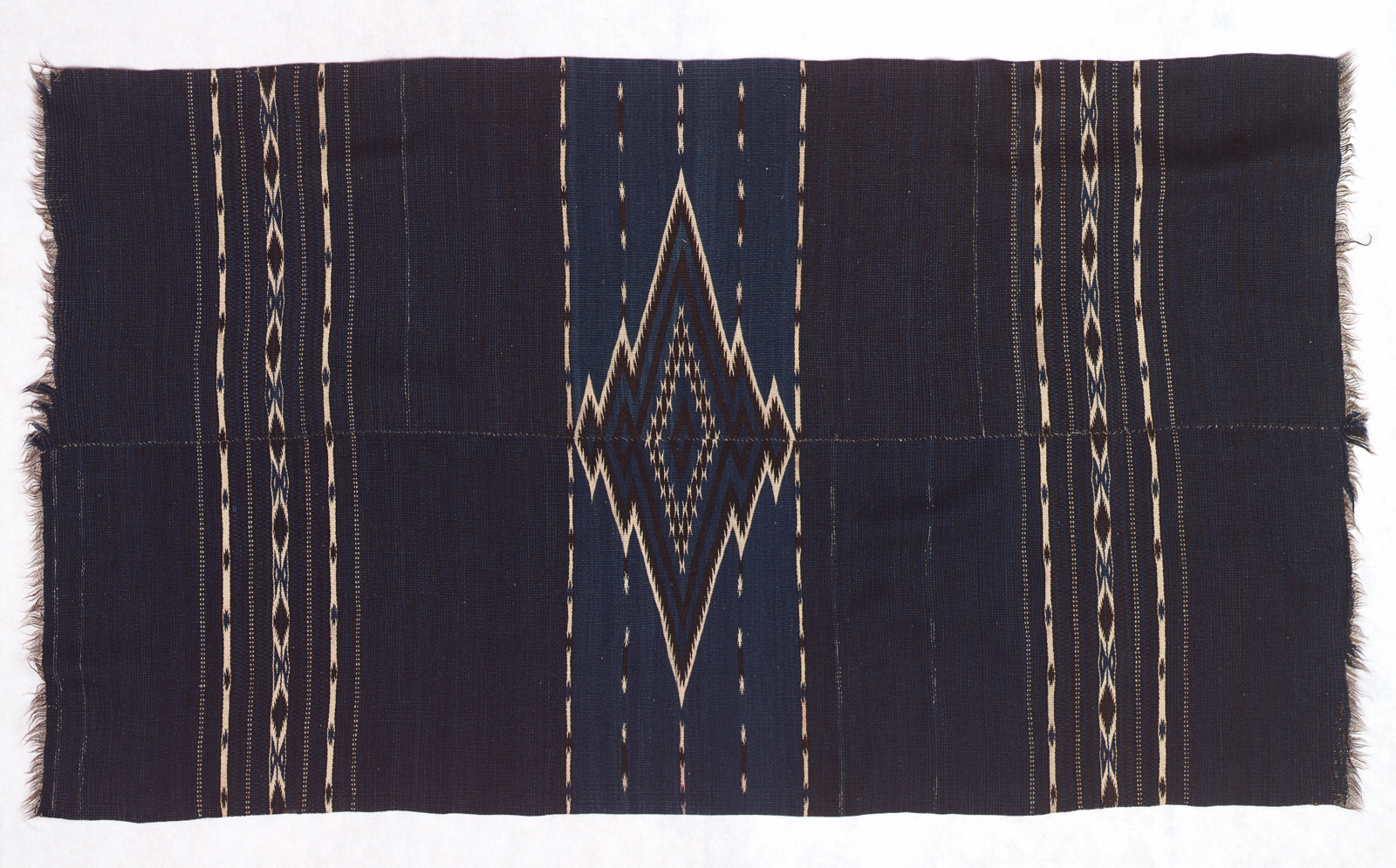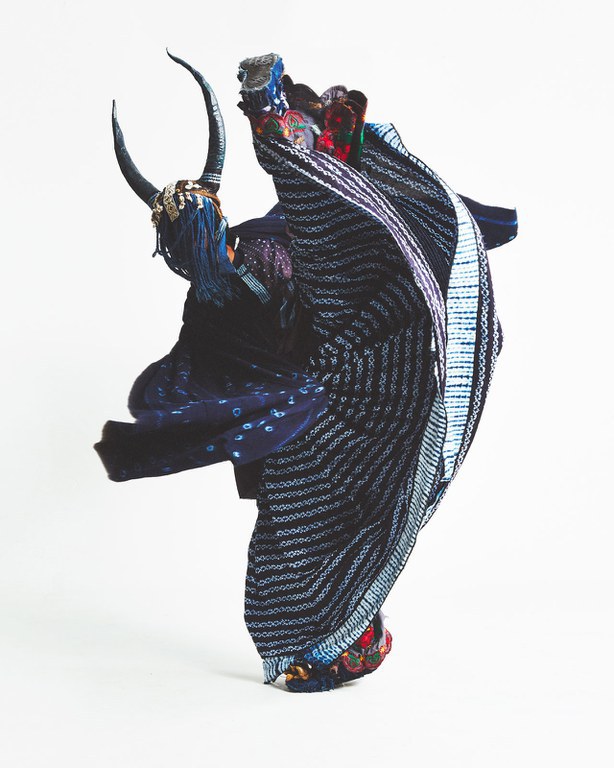Indelible Blue: Indigo Across the Globe
Hispanic New Mexican, Frazada, 1840-1850, wool and indigo, Albuquerque Museum, museum purchase, 1983 General Obligation Bonds, PC1984.25.15
Laura Anderson Barbata, Rolling Calf, 2015, hand-woven indigo-dyed cotton textile by Habibou Coulibaly, courtesy of L’Aviva Home; indigo-dyed cotton brocade, printed cotton, machine embroidery from Oaxaca, decorated sneakers, natural fiber basket, buttons, fabric-maché, leather, character from Intervention: Indigo, photo by Rene Cervantes, courtesy of the artist
This exhibition explored the history, techniques, and movement of indigo, tracing the different varieties of plants back to the regions and cultures that have utilized this elusive dye for millennia. Indelible Blue featured artists from around the world currently working with indigo as well as historical objects from Asia, South Asia, Africa, The Americas, and New Mexico. The exhibition considered how artists are reflecting on the cultural and geographical significance of the color blue and traditional ways of dyeing as well as contemplating the social and cultural narratives that impact the present and the future.
The chemical compound (indican) required to produce indigo dye is present in various levels in several different plant families and hundreds of different plant species. Individuals around the globe have ingeniously developed and utilized various methods for extracting and applying indigo dye for at least the last 6,200 years. While many diverse local techniques and uses of indigo have existed, the allure of the famous blue dye has made the story of indigo inseparable from the history of trade, colonialism, slavery, globalism, and cultural exchange. The labor-intensive process of growing indigo plants and extracting blue pigment from them combined with the value of indigo products led colonial powers to establish indigo plantations in the Southeastern United States, The Caribbean, Latin America, and India. The Indigo Revolt in India and the legacy of slavery are examples of the complex and sometimes violent history of how and why the plant has been grown, traded, and used. The exhibition focused on local traditions and practices that persist outside of indigo’s existence as a global commodity.
Indelible Blue included works by contemporary artists working with indigo who blur the boundaries between tradition and innovation and between the classifications of fine art and craft. While the story of indigo is entangled with its value as a product, the artworks in the exhibition offered alternative perspectives and ways of engaging with indigo dye that reflect on its historical, ecological, and spiritual significance. Artists featured in the exhibition included Rowland Ricketts, Chinami Ricketts, Nikesha Breeze, Gasali Adeyemo, Laura Anderson Barbata, Eduardo Portillo & Mariá Eugenia Dávila, Hiroyuki Shindo, Yukiyo Kawano, Scott Sutton and more. Historical objects included in the exhibition demonstrated the versatility of indigo uses from dyed prestige garments to household objects and will include Navajo serapes, woven frazadas from the Rio Grande Valley, Zuni diamond twill manta, and more. The ties between the history and artistic output of indigo reflect the influence of this most desirable dye across the globe.
This exhibition was curated and organized by Albuquerque Museum with generous loans from the Museum of International Folk Art, the Maxwell Museum of Anthropology, BrownGrotta Gallery, as well as private lenders and many artists included in the exhibition.


